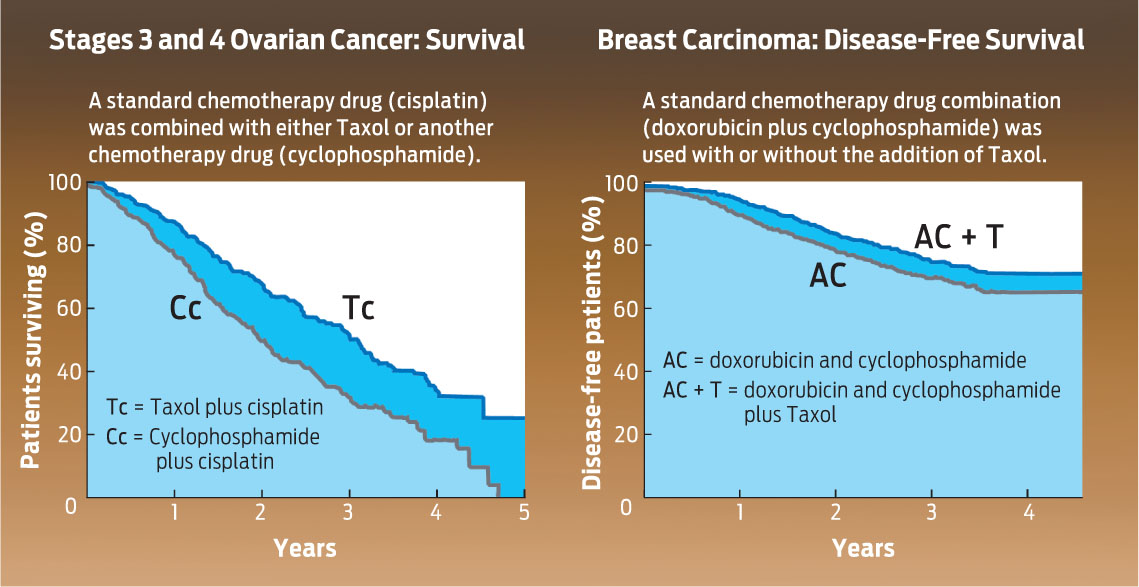FIGHTING CANCER
For all its promise as a new chemotherapy drug, Taxol is not a cure for cancer. Battling the disease often means giving a patient more time, rather than completely eradicating the rogue cells. Cancer is a wily disease, and it has ways of outsmarting even the cleverest drug. Because the underlying mutations that led to cancer are not corrected by Taxol, new mutations may arise that allow the cell to evade the drug, leading to drug-resistant forms of the disease. But still, Taxol improves patients’ chances, especially when combined with other chemotherapy drugs and other forms of treatment (INFOGRAPHIC 9.6).
Patients treated with Taxol in combination with standard chemotherapies had significantly higher response rate, longer time to progression, and longer survival time compared with standard therapy alone.

SOURCE: Sagent Pharmaceuticals
RADIATION THERAPY The use of ionizing (high-energy) radiation to treat cancer.
For many types of cancer, the first line of treatment is often surgery to remove the tumor. Surgery is effective for certain solid tumors, but not for blood cancers (like leukemia), or cancers that have undergone metastasis, that is, that have spread to other parts of the body. In these cases, the best option is usually chemotherapy to treat the cancer cells circulating throughout the body.
METASTASIS The spread of cancer cells from one location in the body to another.
If the cancer has not yet spread, doctors may also treat a tumor with radiation. In radiation therapy, beams of high-energy electrons are focused on a tumor. The radiation severely damages cell molecules and causes rampant DNA damage. This DNA damage causes the cancer cells to die, either directly, as a result of the damage itself, or by triggering apoptosis. (While typically multiple checkpoints have failed in cancer cells, others may still be working well enough to trigger apoptosis.)
The downside of both chemotherapy and radiation is that they can cause severe side effects. That’s because neither therapy is very specific–both treatments damage all rapidly dividing cells in their path, including healthy ones. Healthy cells lining the intestinal tract, cells in hair follicles, and cells in the bone marrow–all of them cells that normally divide rapidly–are routinely killed by chemotherapy, which leads to nasty side effects such as vomiting, bruising, hair loss, and susceptibility to infection. Radiation therapy, if it is targeted to a part of the body with rapidly dividing cells, can also cause severe side effects, although usually they are more localized than with chemotherapy. While scientists are slowly making progress on cancer therapies that target only cancerous cells, chemotherapy and radiation remain the mainstays of cancer treatment.
208
